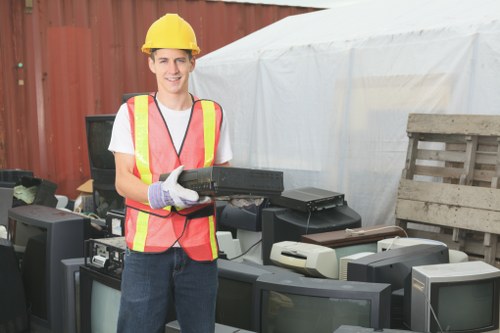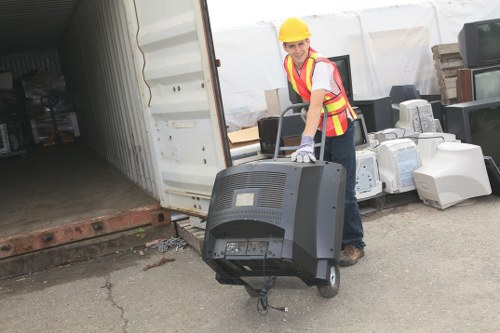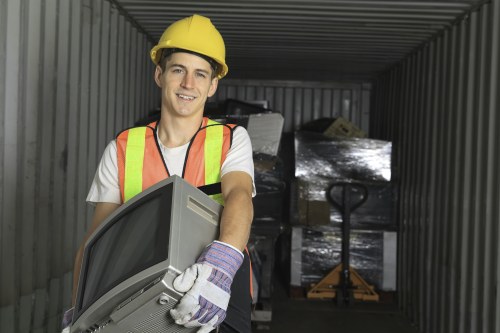Comprehensive Guide to Council Large Item Collection in Council Rubbish Collection
Understanding Council Large Item Collection

Council large item collection is an essential service provided by local authorities to help residents dispose of bulky waste efficiently. From old furniture to large appliances, managing these items can be challenging without proper guidance. Understanding how this service works can save you time, effort, and money.
Large items are typically defined as items that do not fit into regular household waste bins due to their size or weight. Common examples include sofas, mattresses, refrigerators, and garden equipment. Proper disposal of these items ensures that recyclable materials are processed appropriately, reducing the environmental impact.
Most councils offer scheduled large item collections, allowing residents to arrange pickups at convenient times. It's important to check with your local council for specific guidelines, as regulations and services may vary by area.
Eligibility and Scheduling Your Collection

Eligibility for council large item collection typically depends on several factors, including the type of item, its condition, and the volume of waste produced by a household. Some councils limit the number of large item collections per year to manage resources effectively.
To schedule a collection, residents usually need to contact their local waste management authority either online, by phone, or through a designated mobile app. Providing detailed information about the items you wish to dispose of can help streamline the process and ensure timely pickups.
It's advisable to prepare your large items for collection by ensuring they are accessible and placed in the designated collection area on the scheduled date. This might involve moving items to the curbside or a specific drop-off point, as per your council's instructions.
Types of Items Accepted

- Furniture such as sofas, tables, and chairs
- Electronics like televisions, refrigerators, and washing machines
- Garden equipment including lawnmowers and patio furniture
- Mattresses and bedding materials
- Bicycles and sporting goods
While most large items are accepted, there are exceptions. Hazardous materials, construction waste, and certain electronic components may require special disposal methods. Always consult your council's guidelines to ensure compliance with local regulations.
Recycling is a key component of large item collection services. Many councils prioritize the recycling of materials to promote environmental sustainability. By participating in these programs, residents contribute to reducing landfill waste and conserving natural resources.
Preparing for Collection

Proper preparation is crucial for a smooth large item collection experience. Start by assessing the items you intend to dispose of and categorizing them based on recyclability and safety.
Disassemble furniture if possible to minimize space and prevent damage during transportation. Remove any personal belongings from appliances and ensure that all items are clean and free from hazardous substances.
Labeling items can also help waste collectors identify and handle them appropriately. Clear labeling reduces the risk of mismanagement and ensures that items are processed correctly.
Cost and Fees

Many council large item collection services are free of charge for residents, especially when undertaken as part of regular waste management programs. However, some councils may impose fees for extra collections or specialized disposal requirements.
Understanding the cost structure can help you plan your waste disposal effectively. It's recommended to review your council's fee schedule and inquire about any potential charges before scheduling a collection.
In some cases, residents can reduce costs by participating in recycling programs or by donating items in good condition to charitable organizations. These alternatives not only lessen the financial burden but also promote community welfare.
Environmental Impact

Proper large item collection plays a significant role in environmental conservation. By ensuring that bulky waste is processed responsibly, councils help reduce landfill pressure and promote recycling initiatives.
Recycling large items minimizes the extraction of raw materials, conserving natural resources and reducing energy consumption. Additionally, it helps lower greenhouse gas emissions associated with waste decomposition in landfills.
Residents contribute to these environmental benefits by utilizing council services responsibly. Separating recyclable materials and adhering to disposal guidelines maximizes the positive impact of large item collections.
Challenges and Solutions

Despite its benefits, council large item collection faces several challenges, including resource limitations, scheduling conflicts, and public awareness issues.
Resource limitations can restrict the frequency and scope of collection services. To address this, councils can streamline operations, invest in efficient waste processing facilities, and encourage community participation in recycling programs.
Scheduling conflicts often arise when multiple households request collections simultaneously. Implementing an online booking system and providing ample notice can help mitigate these issues.
Best Practices for Residents

To maximize the effectiveness of council large item collection, residents should follow best practices that promote efficiency and sustainability.
- Plan ahead by scheduling collections during low-demand periods.
- Sort items and separate recyclable materials from general waste.
- Ensure items are accessible and clearly labeled for easy identification.
- Follow council guidelines for item preparation and placement.
- Consider donating usable items to local charities.
Adhering to these practices not only facilitates smoother collections but also enhances community engagement in environmental stewardship.
Innovations in Large Item Collection

The field of waste management is evolving, with councils adopting innovative technologies to improve large item collection services.
Smart scheduling systems, driven by data analytics, optimize collection routes and reduce operational costs. Mobile apps provide residents with real-time updates and easy booking options, enhancing user experience.
Advanced recycling technologies enable the efficient processing of diverse materials, increasing the rate of waste-to-resource conversion. These innovations contribute to more sustainable and effective waste management practices.
Community Engagement and Education

Engaging the community is vital for the success of large item collection programs. Educational campaigns inform residents about the importance of proper waste disposal and available services.
Workshops and informational sessions can empower individuals to make informed decisions about waste management, fostering a culture of responsibility and sustainability.
Collaborating with local organizations and schools further amplifies outreach efforts, ensuring widespread participation and support for council initiatives.
Future Trends in Rubbish Collection

The future of council rubbish collection is set to incorporate more sustainable and technologically advanced solutions. Trends such as circular economy models and increased recycling capabilities are shaping the evolution of waste management.
Automation and AI-driven systems are expected to enhance efficiency in sorting and processing large items, reducing human error and operational costs.
Community-driven initiatives, supported by council policies, will play a crucial role in advancing sustainability goals and creating more resilient waste management systems.
Tips for Efficient Large Item Disposal

- Measure items to ensure they qualify for council collection services.
- Remove hazardous components, such as batteries or refrigerants, before disposal.
- Consolidate items to minimize the number of collections required.
- Utilize available online resources to stay informed about collection schedules and guidelines.
- Engage with neighbors to coordinate bulk disposals and share resources.
Implementing these tips can streamline the disposal process, making council large item collection more effective and less time-consuming.
Conclusion

Council large item collection is a pivotal service that supports effective waste management and environmental sustainability. By understanding the processes, preparing adequately, and adhering to best practices, residents can contribute to a cleaner and more sustainable community.
Embracing innovative solutions and fostering community engagement will further enhance the efficiency and impact of these services. Together, we can ensure responsible disposal of large items and promote a healthier environment for future generations.
Contact us today to learn more about your local council's large item collection services and how you can participate in keeping your community clean and green.